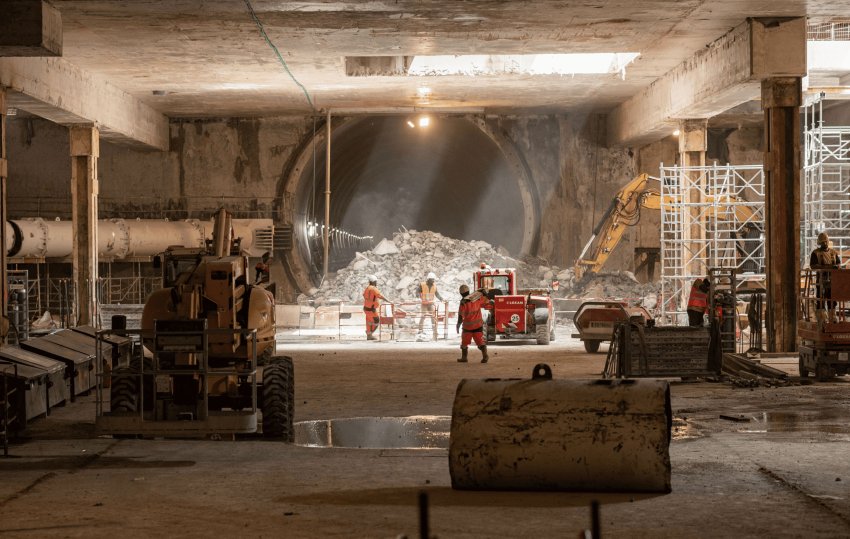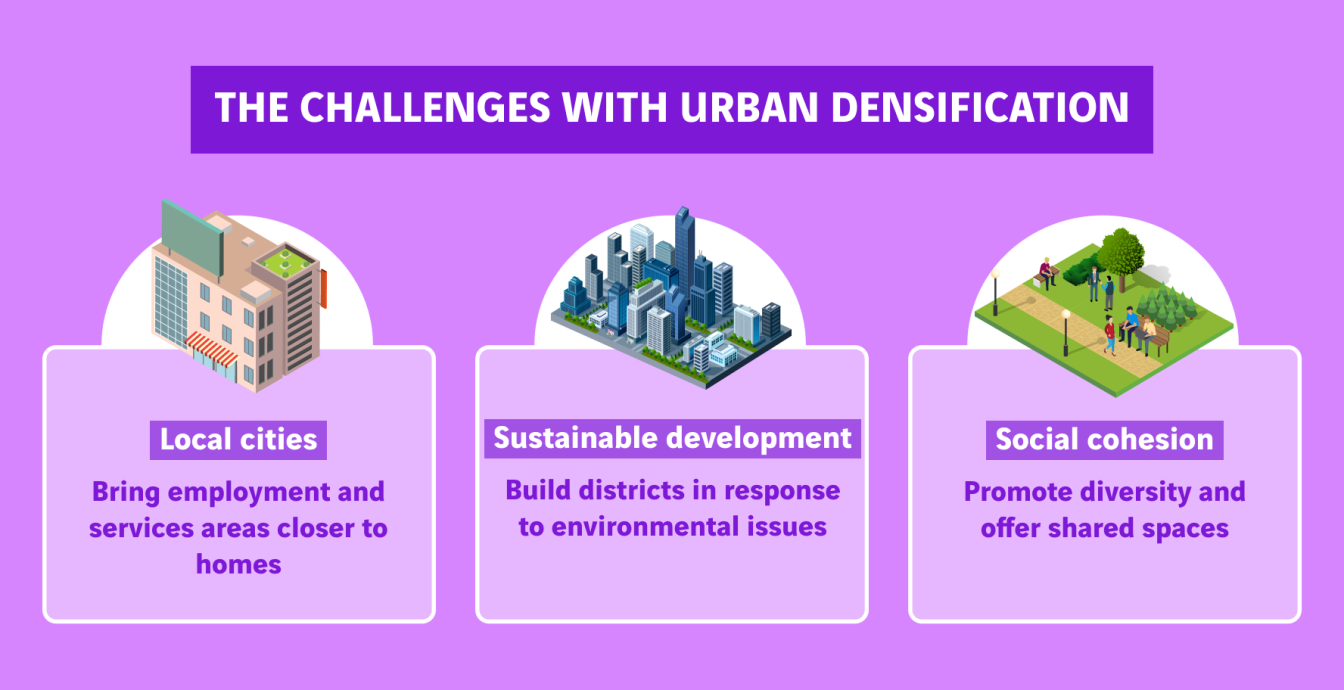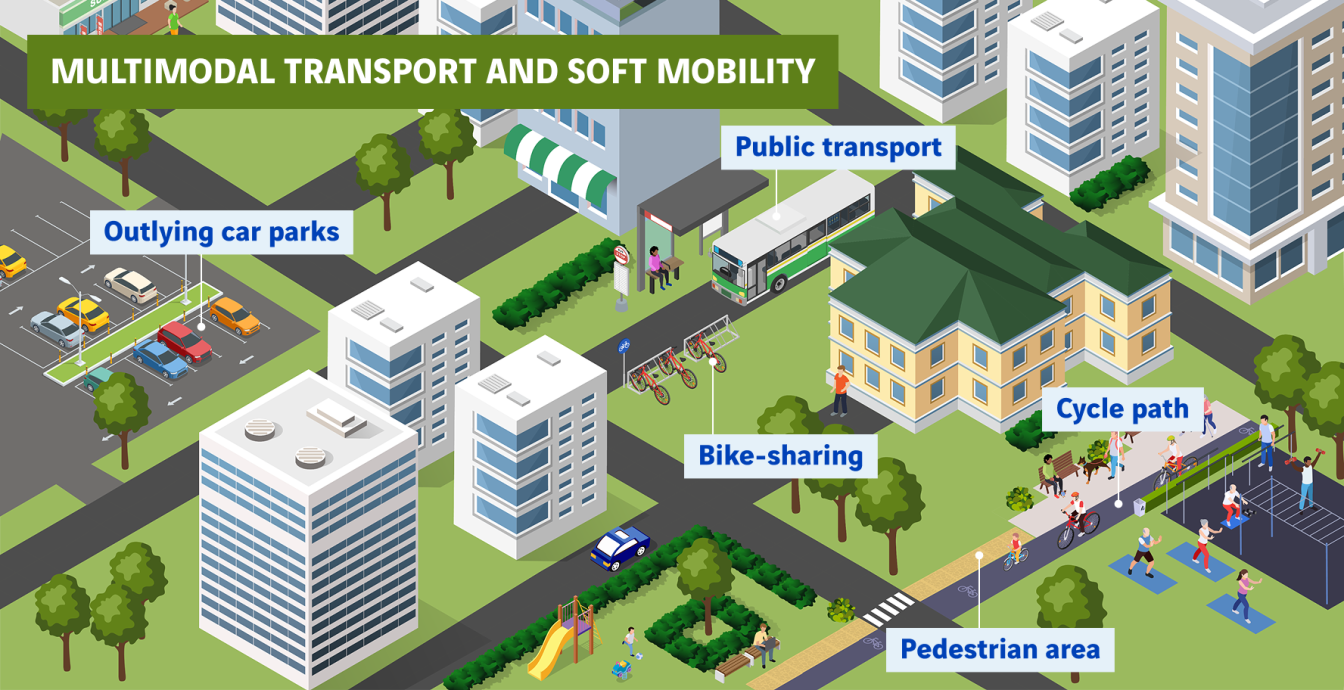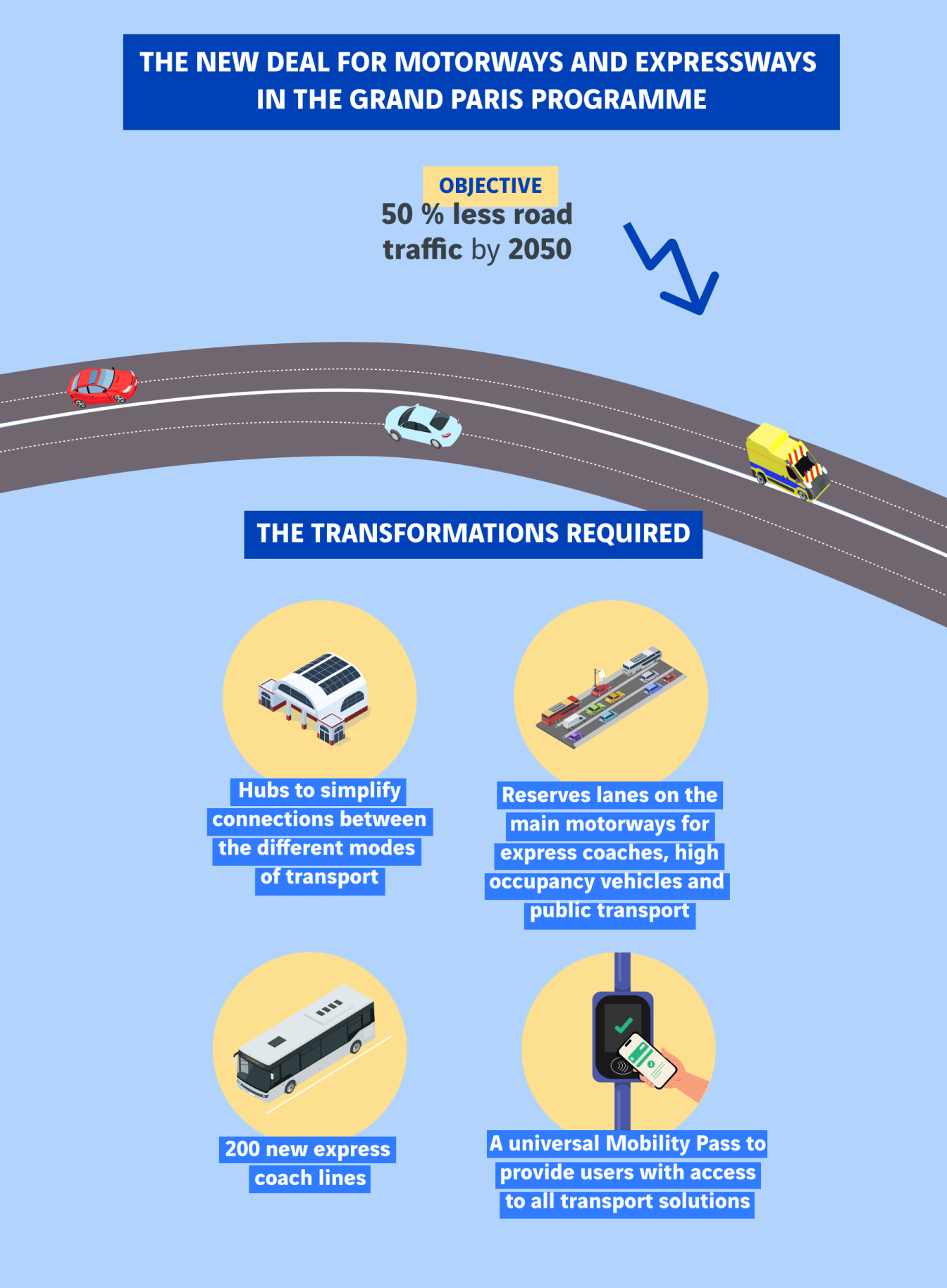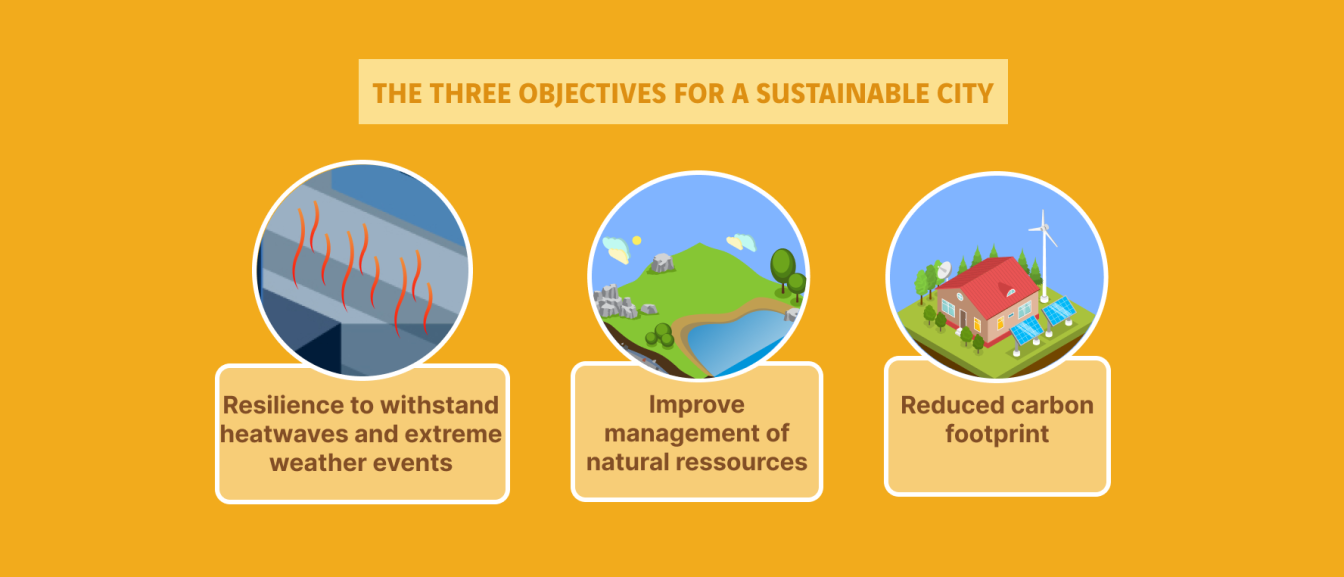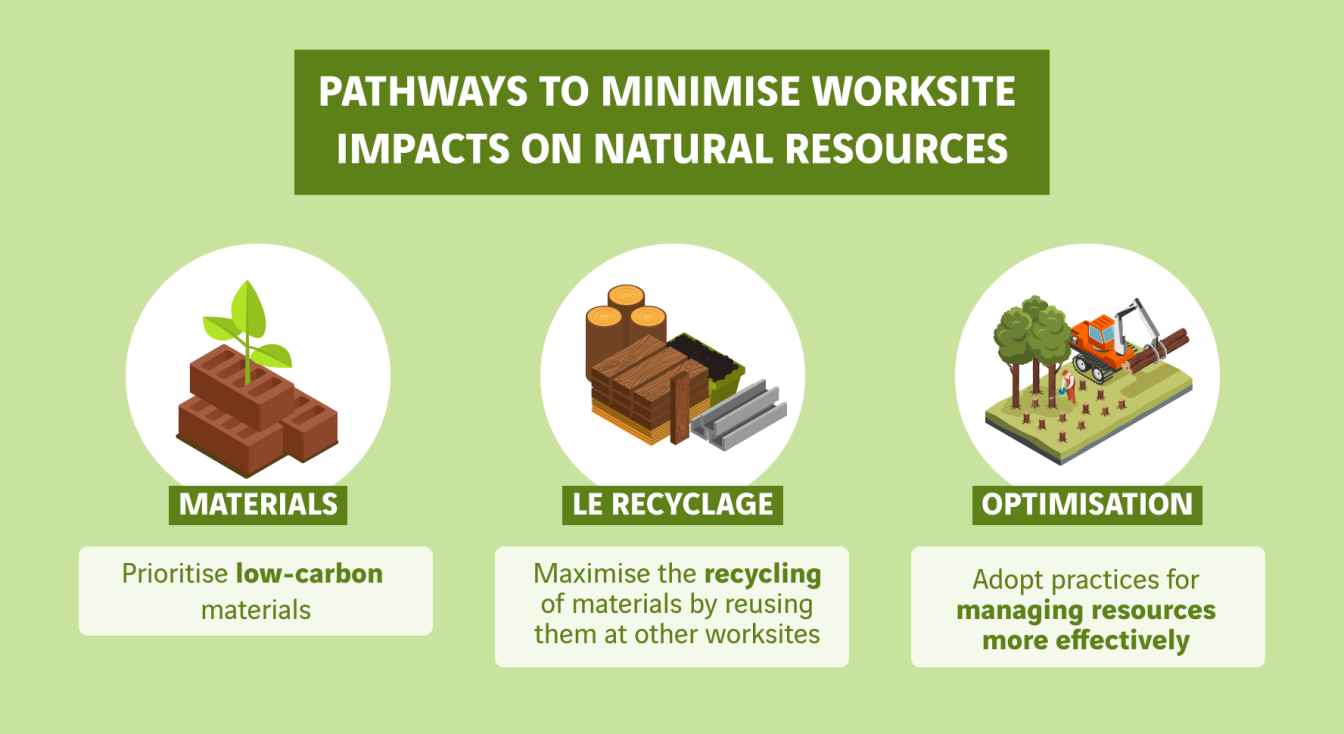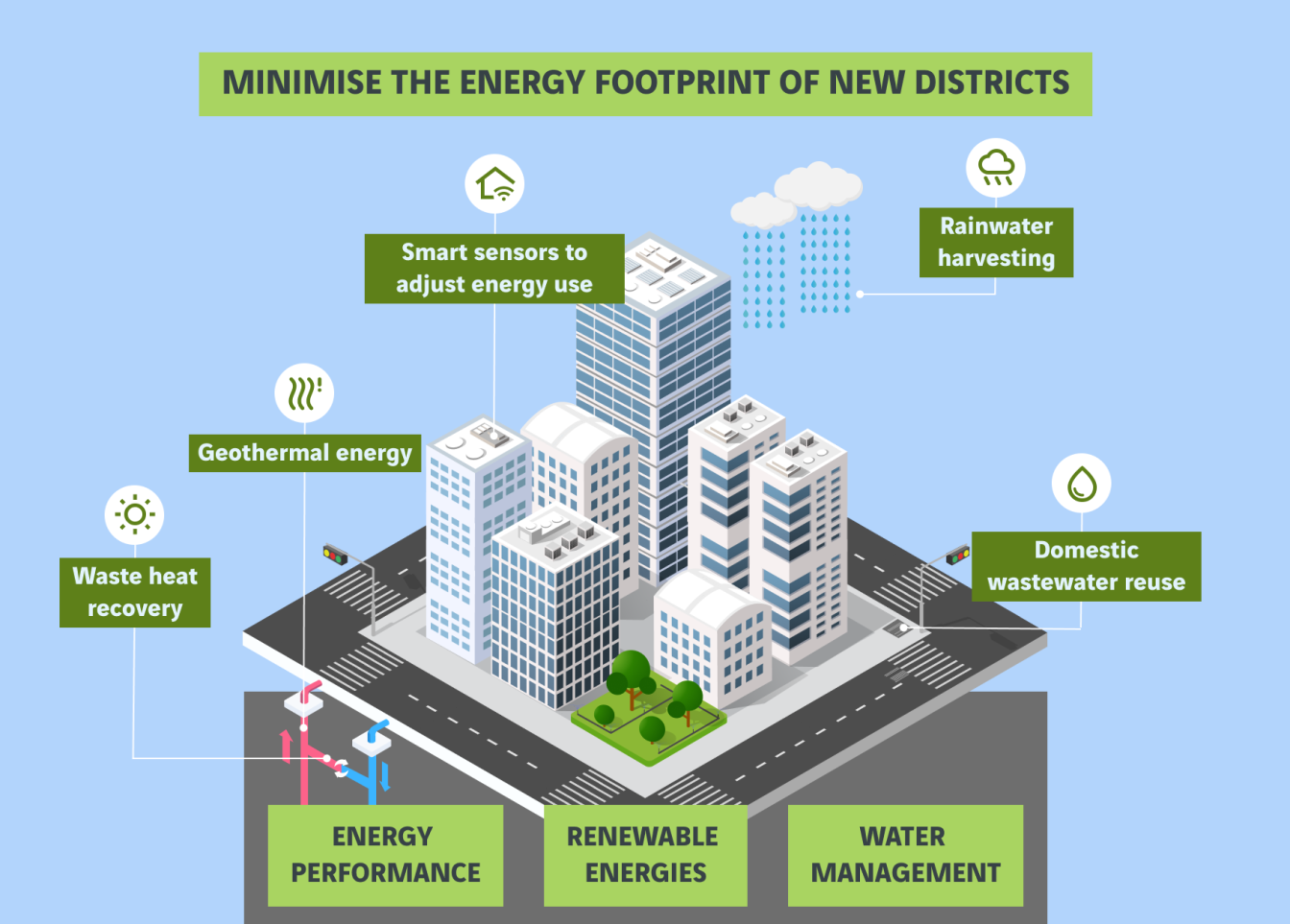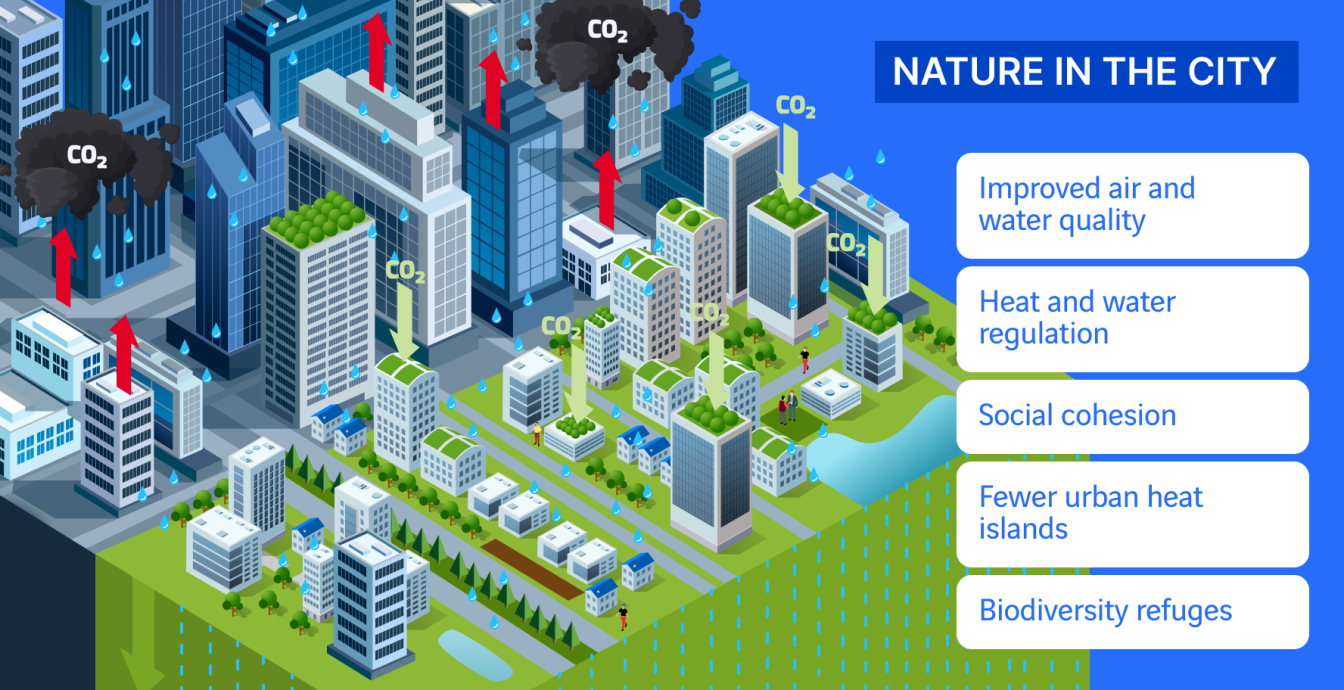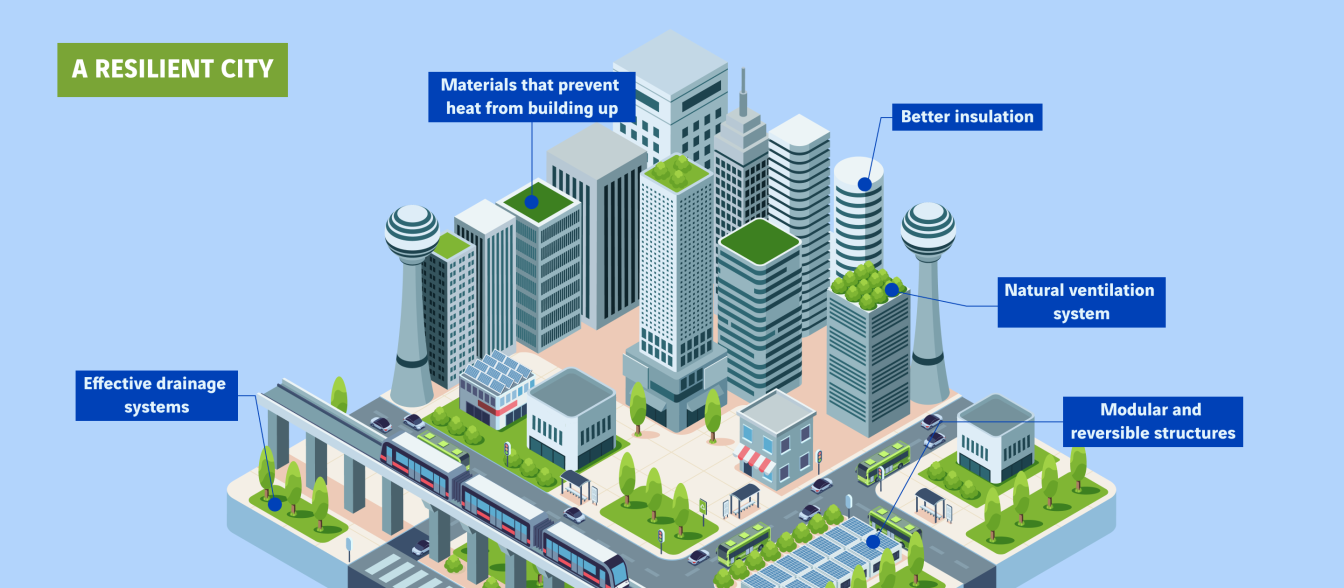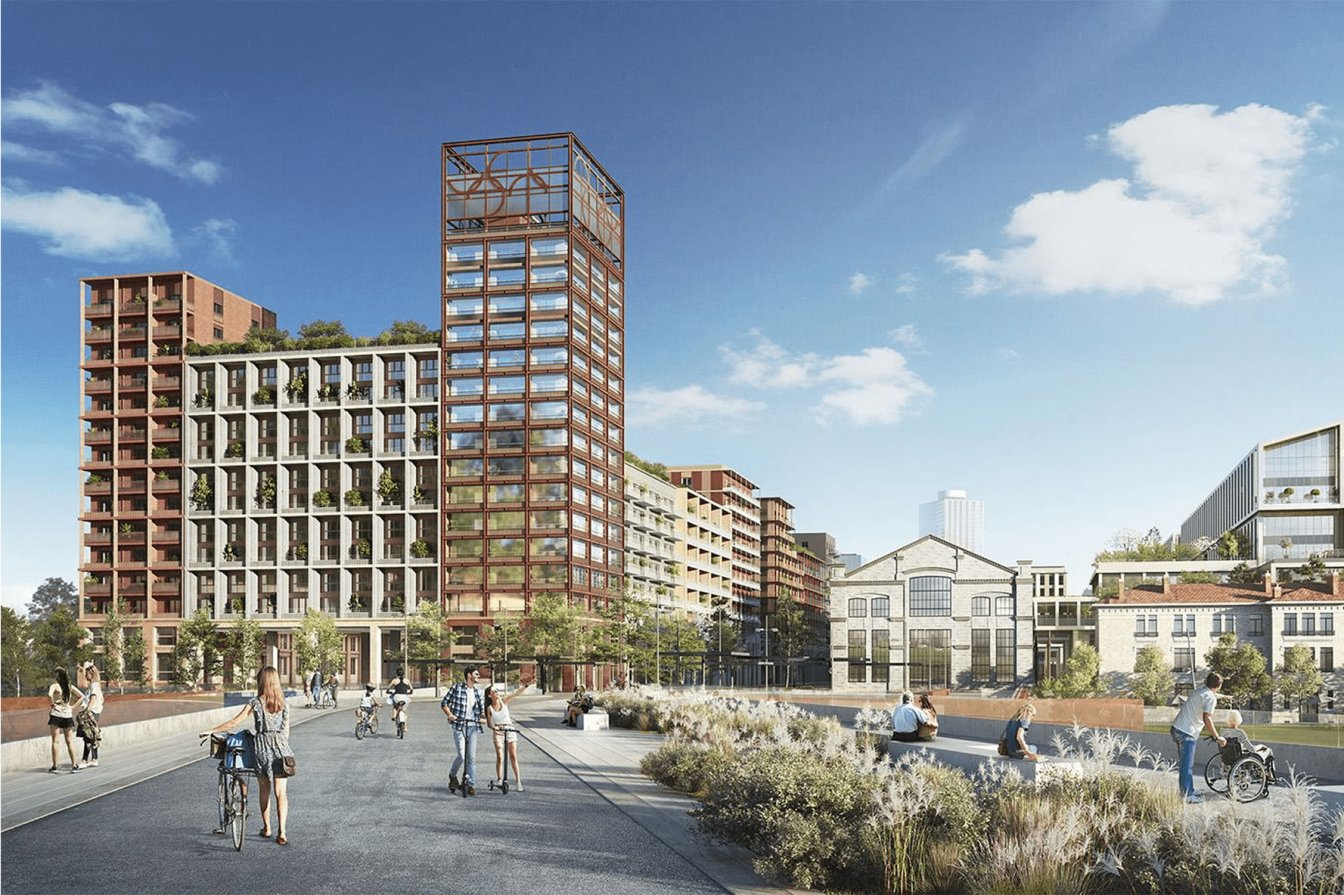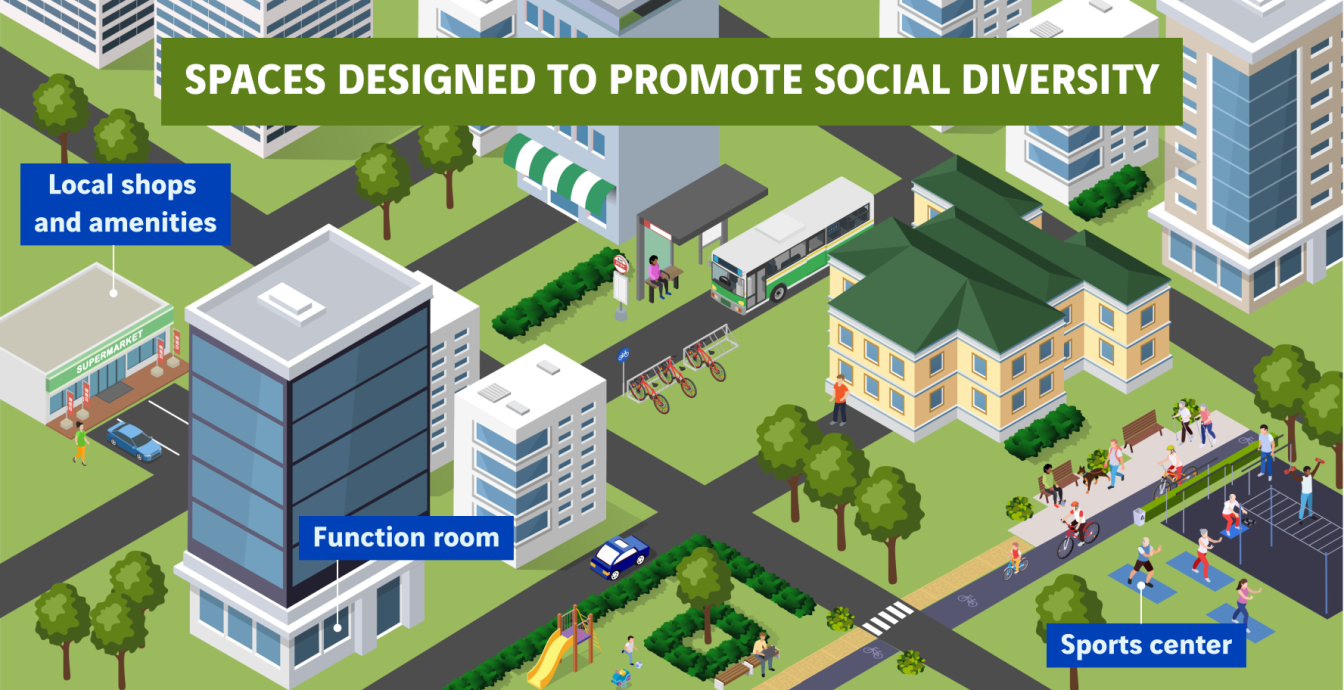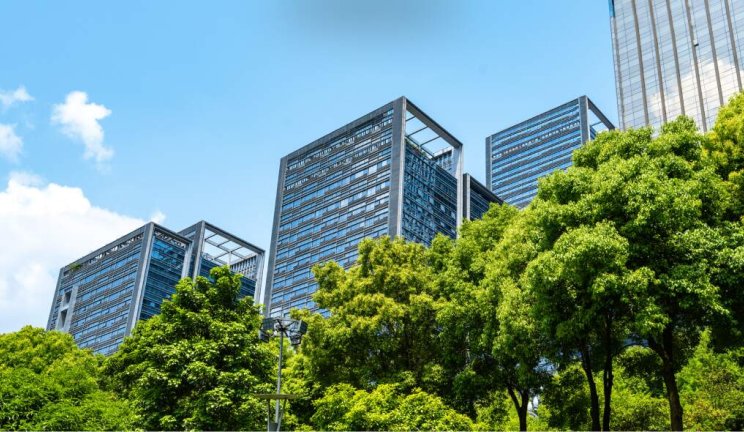Greater Paris: inventing the city of the future
Greater Paris is the name that has been given to an infrastructure and urban development project that is redefining how we live, work and interact with the city. As the Grand Paris Express programme pushes ahead with its plans to build 68 new stations and lay 200 km of additional tracks, new districts are emerging around these new urban transport hubs with designs aimed at addressing the key challenges shaping the 21st century, namely housing, accessibility, social diversity, and the environmental transition.
Dans le même dossier
The ambitions behind the Greater Paris project
Over 2.5 billion more people will be living in cities by 2050[1]. To cope with the pressure of ever surging population levels, cities need to rise to the double challenge of building without endlessly increasing urban sprawl, because ramping up the number of residential areas and drawing inhabitants ever further away from the city centre has the effect of making people more dependent on their cars, widening inequality and nibbling away at natural spaces.
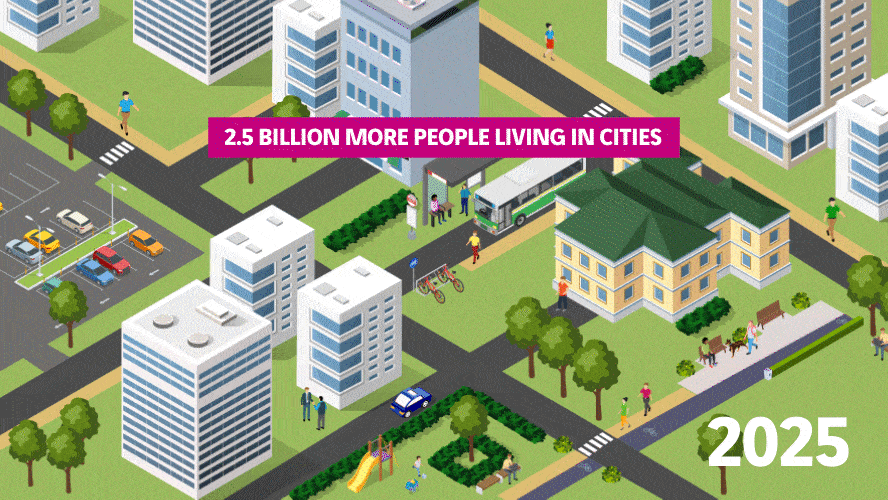
The Greater Paris project is looking to address this issue by taking a sustainable approach to urban densification. With the goal of building 1.5 million housing units along the rapid transit lines of the Grand Paris Express programme, there is more to this challenge than just a question of numbers. Authorities need to have a rethink about how we live in the cities. How can we close the distance that separates people's homes from work, local amenities and services, and thereby cut down on the number of forced journeys? How can we build more sustainable districts as climate change continues to make its presence felt? How can we rebuild social cohesion as population density climbs in our cities?
Three key principles underlie this transformation:
- local cities, where everyone has quick and easy access to the essential services;
- sustainable urban development, which anticipates climate change and reduces the environmental footprint of new buildings;
- districts designed to foster social ties, promote diversity and offer shared spaces.
Local cities: a model for using space more effectively
The 15-minute city, an urban planning concept introduced by academic Carlos Moreno, is based on the simple principle of intelligently dividing up the different urban functions, so that each inhabitant can reach the essential services in less than 15 minutes by walking or riding a bike.
Live, work and consume in the same place
The Grand Paris Express project provides a unique opportunity to redesign how cities are organised by promoting the concept of proximity and mixed-use developments. Simply building new homes and accommodation around the new stations is not enough. The idea is to develop districts where people can live, work and use the local services and amenities, and break away from the model of creating commuter towns and business parks.
To act as truly multi-functional centres, new districts could incorporate:
- homes built above shops and businesses, which is the model that has traditionally been adopted in city centres;
- offices embedded in residential areas to shorten the daily commute;
- public infrastructures within walking distance, such as schools, nurseries, media libraries, sports facilities and cultural centres.
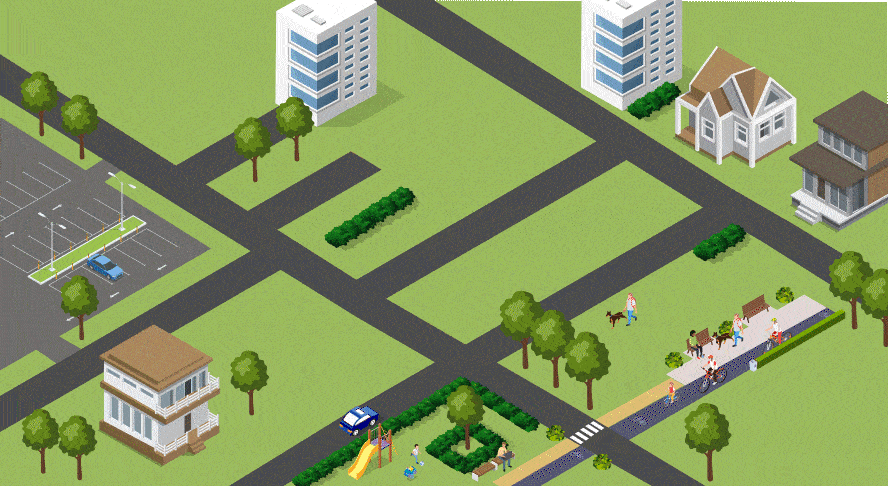
Fewer cars, more soft mobility
Cities that have been designed with the focus on proximity naturally reduce car dependence. By bringing homes closer to work, shops and leisure facilities, it shortens journeys and encourages inhabitants to walk or use a bike for their daily trips.
Give more space back to pedestrians and cyclists
The new districts in the Greater Paris programme include specific measures to champion active forms of transport:
- safe cycle paths with connections to public transport;
- extended pedestrian areas, especially around stations and shops;
- fewer parking spaces in the city centre, with shared parking arrangements on the outskirts.
Effective alternatives to individual vehicles
Cutting down on the use of individual cars does not mean restricting mobility, but instead developing solutions specifically tailored to the needs of the people living in cities. To guarantee seamless and sustainable travel, the new districts in the Grand Paris project are relying on:
- improved public transport services to reduce the amount of traffic clogging the roads;
- shared mobility solutions, such as car-sharing and bike-sharing schemes;
- shared car parks to optimise space while maintaining accessibility.
“New Deal for motorways and expressways in the Greater Paris programme”, which is a project led by a panel of experts that includes VINCI’s innovation platform Leonard, is looking to achieve its ambition of halving road traffic by 2050 while providing travellers with greater transport capacities.
To realise this aim, experts are considering a number of major transformations, such as:
- deploying 200 new express coach lines;
- creating reserved lanes on the main urban motorways for express coaches, high occupancy vehicles and public transport;
- developing “NewDeal” hubs to improve connections between the different modes of transport, in alignment with the gradual roll-out of the Grand Paris Express programme;
- setting up a universal Mobility Pass to provide users with access to all the transport solutions.
These initiatives are part of the Greater Paris project’s long-term vision for mobility, which aims to curb car dependence and make better use of the urban space.
Build a substainable and resilient city in response to the challenges of climate change
As the French capital braces itself for the prospect of spiralling temperatures in the future, the city needs to take action now by adapting to what tomorrow’s environment will actually be like. The idea is to increase the city’s resilience to heatwaves and extreme weather events, manage natural resources more effectively, and shrink its carbon footprint.
The Greater Paris project, where thousands of new homes and infrastructures are already under construction, has to contend with two challenges:
- lower the environmental impact of the new districts;
- design a city that is capable of adapting to changes in climate conditions.
Reduce the environmental impact of the construction process
To absorb the intake of new inhabitants while adapting the city to reduce the footprint of the construction process, new methods are being implemented to scale down the impact that worksites are having on the planet’s resources:
- use materials, like low-carbon concrete, to lower the environmental footprint of new buildings;
- recycle worksite materials, by recovering spoil and incorporating recycled materials into the construction materials for new infrastructures and buildings;
- improve worksite performance by managing resources more effectively.
Develop low-energy and resource-efficient cities
One of the key issues with these new districts is their energy footprint. They need to be capable of lowering their energy consumption and their dependence on fossil fuels. Grand Paris is relying on more effective and sustainable technologies to power its infrastructures.
- Development of high-performance buildings equipped with smart sensors to adjust their energy use accordingly.
- Heating networks supplied by renewable energies, especially geothermal energy and waste heat recovery.
- Rainwater harvesting and domestic wastewater reuse to reduce waste and optimise resources.
Transform nature into a key element of the city
One of the main challenges in dense cities is the overwhelming use of concrete, which causes heat to build up and prevents rainwater from soaking away, thereby increasing the risk of flooding. Several strategies are vitally important for minimising these effects:
- develop more green spaces and roofs to capture the heat and improve air quality;
- use permeable materials (draining pavements and porous floor surfaces) to prevent excessive runoff;
- create wildlife corridors and green corridors connecting the new districts to urban parks and forests.
Build resilient infrastructures to withstand climate change challenges
At a time when climate change is causing heatwaves and extreme weather events to strike with greater intensity, infrastructures need to be designed to withstand such phenomena. As far as the Grand Paris project is concerned, this involves anticipating the risks, incorporating appropriate materials and designs, and enabling buildings to scale with future needs and uses.
- Adaptation to heatwaves, with buildings featuring better insulation and natural ventilation systems.
- Urban planning practices that factor in flooding risks, develop effective drainage systems and prevent new buildings from being constructed in high-risk areas.
- Design of scalable buildings that are capable of adapting to changing uses, especially by including modular and reversible structures.
Universeine: a trailblazing eco-district
VINCI Immobilier is transforming a 6.4-hectare brownfield site into an innovative, sustainable eco-district in Saint-Denis. This ambitious project, known as Universeine, embodies Grand Paris’s vision of a responsible urban development:
- smart reconversion: the site was used as the Athletes’ Village during the 2024 Olympic and Paralympic Games. The site is being reconverted into a mixed-use district comprising 79,000 sq. metres of homes, 63,000 sq. metres of offices and 4,000 sq. metres of shops and services;
- environmental excellence: the buildings are aimed at achieving a carbon footprint that is 40% less than conventional buildings by using low-carbon materials and choosing the best orientation to improve their energy performance;
- urban biodiversity: the project includes a biodiversity corridor that connects the Seine to the district centre, which creates cool islands and increases resilience to the effects of climate change;
- soft mobility: over 50% of the free space is dedicated to active modes of transport, with cycle paths, cycle parking spaces and predominant pedestrian zones. The central traffic lane is reserved for buses and soft mobility users, and a future pedestrian/bus bridge will link the eco-district to L’Île-Saint-Denis.
Promote social diversity and cohesion in the cities of tomorrow
Before they can claim to be truly sustainable, tomorrow’s cities need to facilitate social diversity by incorporating affordable housing, quality public spaces and a collaborative construction process involving inhabitants.
Guarantee a wide range of housing solutions for a universally accessible city
One of the major risks facing the new districts is real estate speculation, since it could leave part of the population by the wayside if it inflates property prices.
New districts must not be transformed into neighbourhoods that are reserved exclusively for the wealthy or, conversely, into social housing areas specifically for vulnerable groups. The new urban centres associated with the Grand Paris project drive social diversity by offering an array of housing solutions tailored to each of the different profiles:
- social and intermediate housing to allow low-income and middle-class populations to live in the new districts;
- regulated housing schemes for first-timer buyers to avoid any speculation and prevent excessive price increases;
- student and homeshare housing to encourage a wide range of ages and uses.
Public spaces designed to foster social cohesion
Social diversity is not only promoted through housing choices, but also in everyday spaces, such as public spaces, shops, cultural facilities and sports centres. The idea is to design thriving and attractive districts that encourage social interaction between inhabitants, such as by:
- developing local shops and amenities to prevent residential districts from turning into neighbourhoods with no sense of community;
- creating community facilities, including media libraries, function rooms or sports centres available to everyone;
- increasing the number of public green spaces, where inhabitants can relax and socialise.
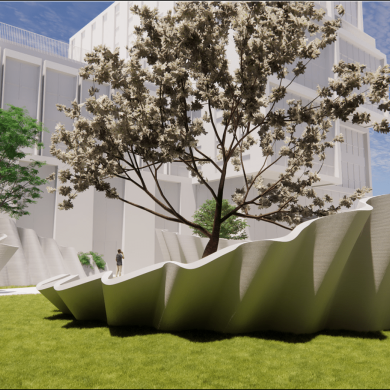
Rêve de Scènes Urbaines: a laboratory spearheading urban innovation
The “Rêve de Scènes Urbaines” project (“Dream of Urban Scenes”) launched by VINCI in 2015 is a world-unique space for urban experimentation in the Plaine Commune community in the heart of Greater Paris. This project is aimed at reinventing the actual city by addressing the challenges of environmental protection, innovation and social inclusion.
Unlike conventional urban projects, which often operate in silos, this initiative involves continuous dialogue between public and private stakeholders. The association currently brings together 80 partners, including companies, startups, local authorities and experts, with the goal of developing specific solutions to tackle urban challenges, such as:
- stimulating local employment
- creating mixed-use and inhabitable spaces
- improving energy performance
- achieving low-carbon objectives
- lowering construction and maintenance costs
By harnessing collective intelligence and experimentation, Rêve de Scènes Urbaines demonstrates that tomorrow’s cities cannot be designed without an open and collaborative approach. By giving inhabitants and local stakeholders a central role in these projects, it is helping shape a metropolitan area that is better adapted to address the climate and social challenges of tomorrow’s world.
Grand Paris Express is so much more than a simple infrastructure project. It is a pathway for transforming urban development practices and shaping the cities of tomorrow’s world. By adopting a smart approach to urban densification, lowering the environmental impact and driving social diversity, this project lays the foundations for a more resilient and inclusive metropolitan area.
VINCI is engaged in the same dynamic process, as reflected in its determination to build cities that are more sustainable, intelligent and pleasant to live in, by pioneering innovative solutions and developing collaboration between the different stakeholders in the urban ecosystem.
Source
[1] 2,5 milliards de personnes de plus habiteront dans les villes d'ici 2050 (Département des affaires économiques et sociales de l'ONU)
Subscribe
Stay tuned : receive our newsletter
Every quarter, discover new articles, exclusive features and experts' views delivered straight to your inbox.
Most viewed
Explore more
Marina Lévy - Companies at the heart of ocean conservation issues
Marina Lévy, oceanographer, research director at the CNRS and ocean advisor to the president of the French National Research…
Building with and for nature
Whether creating barrages, stripping away topsoil, cutting down trees or digging channels, humans have spent thousands of…
Bridging the construction gender gap: paving the way to a career in industry for women in Colombia
In 2025, the Ruta 40 consortium led by VINCI Construction Grands Projets completed work on widening and upgrading the Bogotá…
